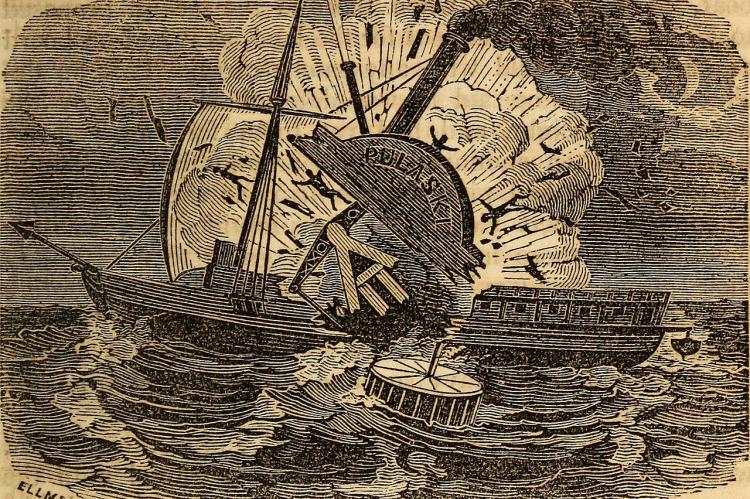Identity of 1838 shipwreck off NC coast confirmed
A shipwreck off the North Carolina coast has been verified as the SB Pulaski a steam ship that sank in 1838. Several items recovered this past week contain the name “Pulaski” stamped on the artifacts, establishing the ship’s provenance.
The Steamship Pulaski disaster was the term given to the June 14, 1838 explosion on board the American steam packet, which caused it to sink 30 miles off the coast of North Carolina with the loss of two-thirds of the passengers and crew. About 59 persons survived, and 128 were lost. She is one of the more notable shipwrecks in the early history of the eastern seaboard of the United States.
Big maritime disaster
The disappearance of the Pulaski remains one of the nation’s most dramatic and deadly maritime disasters, partly because half of the people on board died, but also because its passengers included some of the most prominent families in the Southeast. Among those lost was New York congressman William B. Rochester and six members of the Lamar family, then among the richest families in the Southeast.
The wreck which was located in January but not definitively identified until now is sitting in under 100 feet of water about 40 miles (65 kilometers) off the coast, more than 10 miles (15 kilometers) farther out to sea than historians originally believed the Pulaski went down.
Endurance Exploration owns the wreck site, having filed an admiralty claim in federal court but brought recovery firm Blue Water Ventures on board because it specializes in recovering historical artifacts. However, what divers see does not resemble a ship, Keith Webb of Blue Water Ventures told the Charlotte Observer in January. “It’s a 30-foot by 60-foot pile of copper, from the boilers to the copper walls that surrounded the boilers. They are lapped onto each other. We’ve got bolts, rivets, brass fittings and lots of 5-inch-thick fire bricks, which would have been on the floor. There’s no wood left and nothing of the structure.”
Proof of identity
To date, the Pulaski site has produced 115 gold and silver coins, all dated prior to 1838. These finds represent early American coinage, Spanish colonial and British coins. All coins are being conserved and appraised by Numismatic Guarantee Corporation. Several items recovered this past week by Blue Water Ventures International divers contain the name “Pulaski” stamped on the artifacts, finally establishing the ship’s provenance. Other unique items recovered include a small, unique box, a pocket watch, candlestick holders, brass wall sconces, keys and a numbered brass tag marker with the name SB Pulaski stamped on it.


